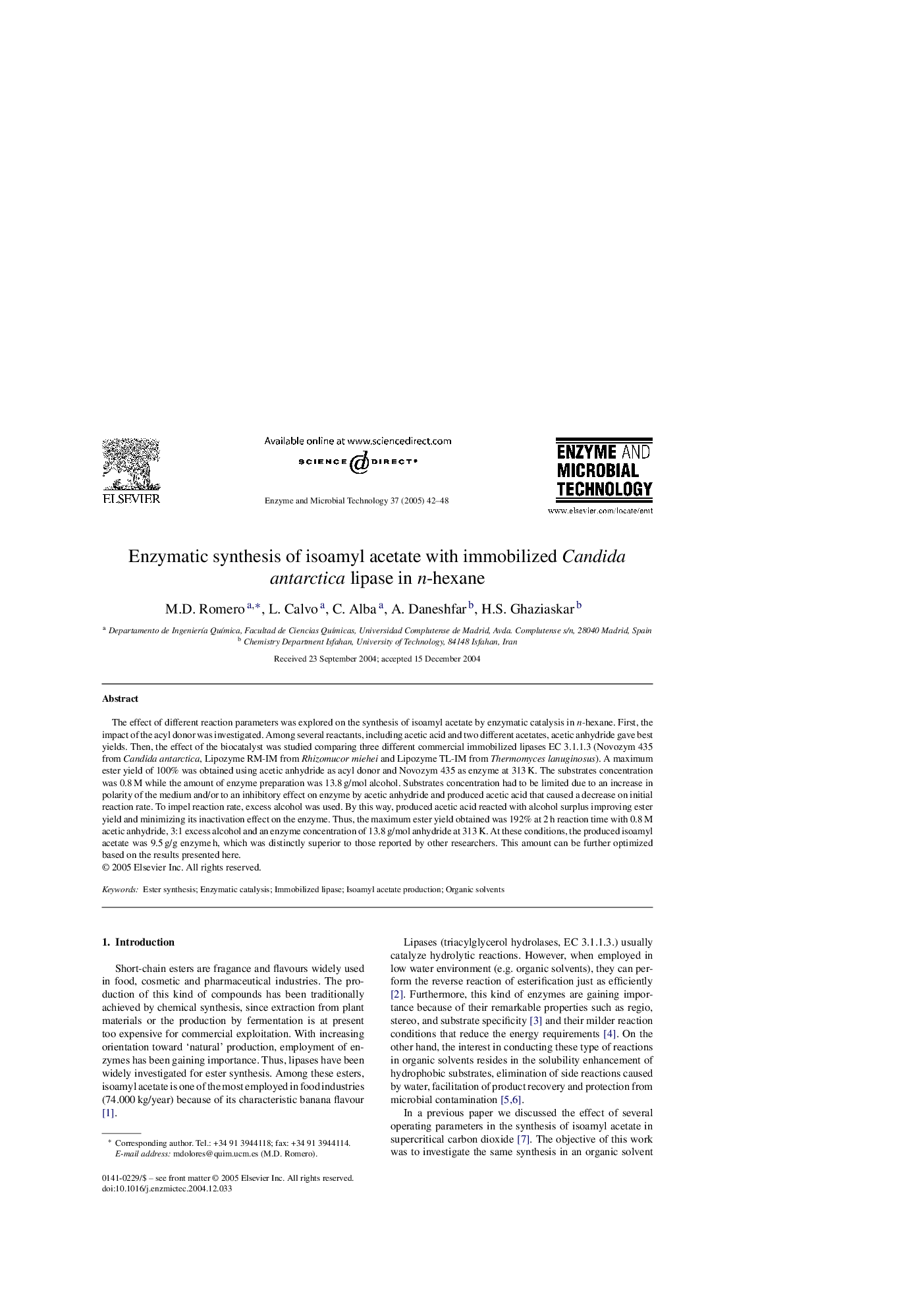| Article ID | Journal | Published Year | Pages | File Type |
|---|---|---|---|---|
| 10233554 | Enzyme and Microbial Technology | 2005 | 7 Pages |
Abstract
The effect of different reaction parameters was explored on the synthesis of isoamyl acetate by enzymatic catalysis in n-hexane. First, the impact of the acyl donor was investigated. Among several reactants, including acetic acid and two different acetates, acetic anhydride gave best yields. Then, the effect of the biocatalyst was studied comparing three different commercial immobilized lipases EC 3.1.1.3 (Novozym 435 from Candida antarctica, Lipozyme RM-IM from Rhizomucor miehei and Lipozyme TL-IM from Thermomyces lanuginosus). A maximum ester yield of 100% was obtained using acetic anhydride as acyl donor and Novozym 435 as enzyme at 313 K. The substrates concentration was 0.8 M while the amount of enzyme preparation was 13.8 g/mol alcohol. Substrates concentration had to be limited due to an increase in polarity of the medium and/or to an inhibitory effect on enzyme by acetic anhydride and produced acetic acid that caused a decrease on initial reaction rate. To impel reaction rate, excess alcohol was used. By this way, produced acetic acid reacted with alcohol surplus improving ester yield and minimizing its inactivation effect on the enzyme. Thus, the maximum ester yield obtained was 192% at 2 h reaction time with 0.8 M acetic anhydride, 3:1 excess alcohol and an enzyme concentration of 13.8 g/mol anhydride at 313 K. At these conditions, the produced isoamyl acetate was 9.5 g/g enzyme h, which was distinctly superior to those reported by other researchers. This amount can be further optimized based on the results presented here.
Related Topics
Physical Sciences and Engineering
Chemical Engineering
Bioengineering
Authors
M.D. Romero, L. Calvo, C. Alba, A. Daneshfar, H.S. Ghaziaskar,
